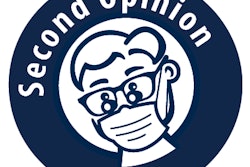
Oral disorders were the leading cause of nonfatal health loss worldwide in both women and men, according to a major new report published November 10 in the Lancet.
There were almost 3.5 billion reports of oral disorders in 2017, including caries, periodontal disease, edentulism, and other disorders. Headache disorders and tuberculosis were the next most-reported issues, the researchers found. Hundreds of practitioners participated in the data gathering.
"This study emphasizes how global improvements in premature mortality for select conditions have led to older populations with complex and potentially expensive diseases, yet also highlights global achievements in certain domains of disease and injury," the group wrote.
Periodontal issues
The Global Burden of Diseases, Injuries, and Risk Factors Study 2017 (GBD 2017) included a comprehensive assessment of incidence, prevalence, and years lived with disability for 354 causes in 195 countries and territories from 1990 to 2017.
The study used a standardized approach for estimating incidence, prevalence, and years lived with disability by cause, age, sex, year, and location. The researchers aimed to use all accessible information on disease occurrence, natural history, and severity that passed a set of inclusion criteria. The group used almost 70,000 data sources, including literature studies, survey data, surveillance data, inpatient admission records, outpatient visit records, health insurance claims, and results from cause-of-death models.
All-cause, age-standardized years-lived-with-disability rates decreased by 3.9% from 1990 to 2017, but the sum of global years lived with disability increased from 562 million to 853 million during the same time period. The results indicate considerable heterogeneity among different causes, locations, ages, and sexes throughout the world, the researchers noted.
Men and women shared two of the top three causes of nonfatal health loss. For women, the causes with the greatest age-standardized prevalence were oral disorders, headache disorders, and hemoglobinopathies and hemolytic anemias. For men, the causes with the greatest age-standardized prevalence were oral disorders, headache disorders, and tuberculosis including latent tuberculosis infection in both 1990 and 2017.
With the exception of periodontal disease, all other markers of oral health disorder have improved since 1990. A breakdown of the prevalence of oral disorders is shown in the table below.
| Prevalence of oral disorders worldwide, 1990-2017 | |||||||
| Prevalence (thousands), 2017 counts | Incidence (thousands), 2017 counts | Years lived with disability (thousands) | |||||
| 2017 counts | Change in counts, 1990-2007 | Change in counts, 2007-2017 | Change in age-standardized rates, 1990-2007 | Change in age-standardized rates, 2007-2017 | |||
| Caries of deciduous teeth | 531,801.7 | 1,057,534.3 | 138.9 | -4.5% | 4.9% | -7.0% | -2.1% |
| Caries of permanent teeth | 2,301,999.2 | 2,452,124.9 | 1,618.9 | 20.6% | 9.4% | -8.2% | -4.0% |
| Periodontal disease | 796,122.9 | 71,483.7 | 5,185.6 | 50.2% | 26.6% | 3.2% | 2.8% |
| Edentulism and severe tooth loss | 267,457.5 | 18,452.1 | 7,345.9 | 40.8% | 24.6% | -6.3% | -4.1% |
| Other oral disorders | 139,086.3 | -- | 4,015.1 | 32.7% | 15.7% | 0.0% | 0.2% |
| Total oral disorders | 3,466,894.0 | 3,599,595.0 | 18,304.4 | 38.4% | 21.4% | -2.7% | -1.3% |
Burden to systems
The study authors noted that there are several limitations in a study containing this amount of data:
- Some causes rely heavily on clinical data, given the lack of other sources. These data can have a selection bias, which the researchers made an effort to correct for by using representative studies as a reference group.
- Data availability does not consistently correlate with burden -- that is, high-burden causes and locations can have relatively sparse data for nonfatal outcomes.
The authors noted that differential access-to-care, economic inequality, and imbalanced risk factor profiles can and do challenge the ability of health systems to achieve equitable health outcomes in the face of complex and resource-draining diseases and injuries.
"Addressing such lapses in health equity can pose a burden to underresourced healthcare systems and economies," they concluded.



















